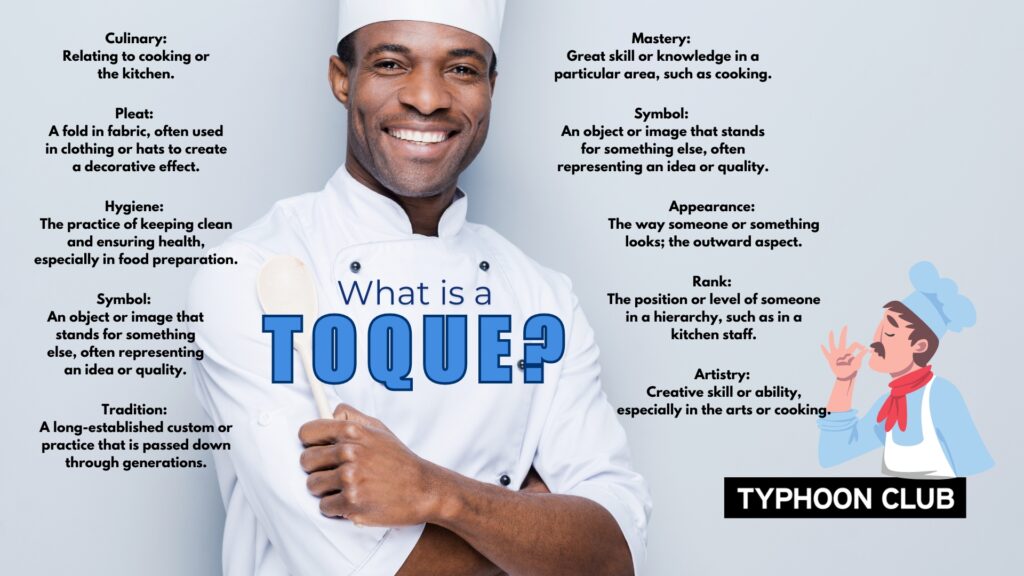
A toque is a tall, white hat traditionally worn by chefs in professional kitchens. It is easily recognised by its distinctive shape, often resembling a pleated cylinder. The word “toque” comes from the French language, where it means “hat.” This hat is not just a fashion statement; it has practical and historical significance in the culinary world.
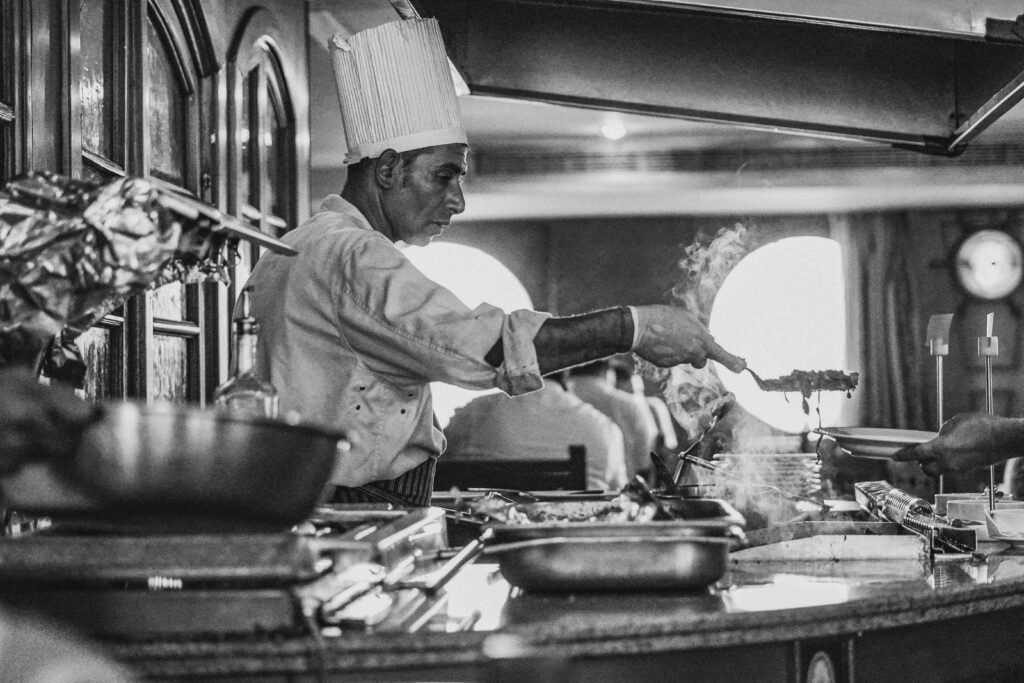
The history of the toque dates back to the 16th century in France. It was originally worn by the upper class and later became associated with chefs. The tall shape of the toque is believed to have several purposes. First, it helps to keep a chef’s hair neatly contained while they work, preventing any stray hairs from falling into the food. This is important for maintaining hygiene in the kitchen.
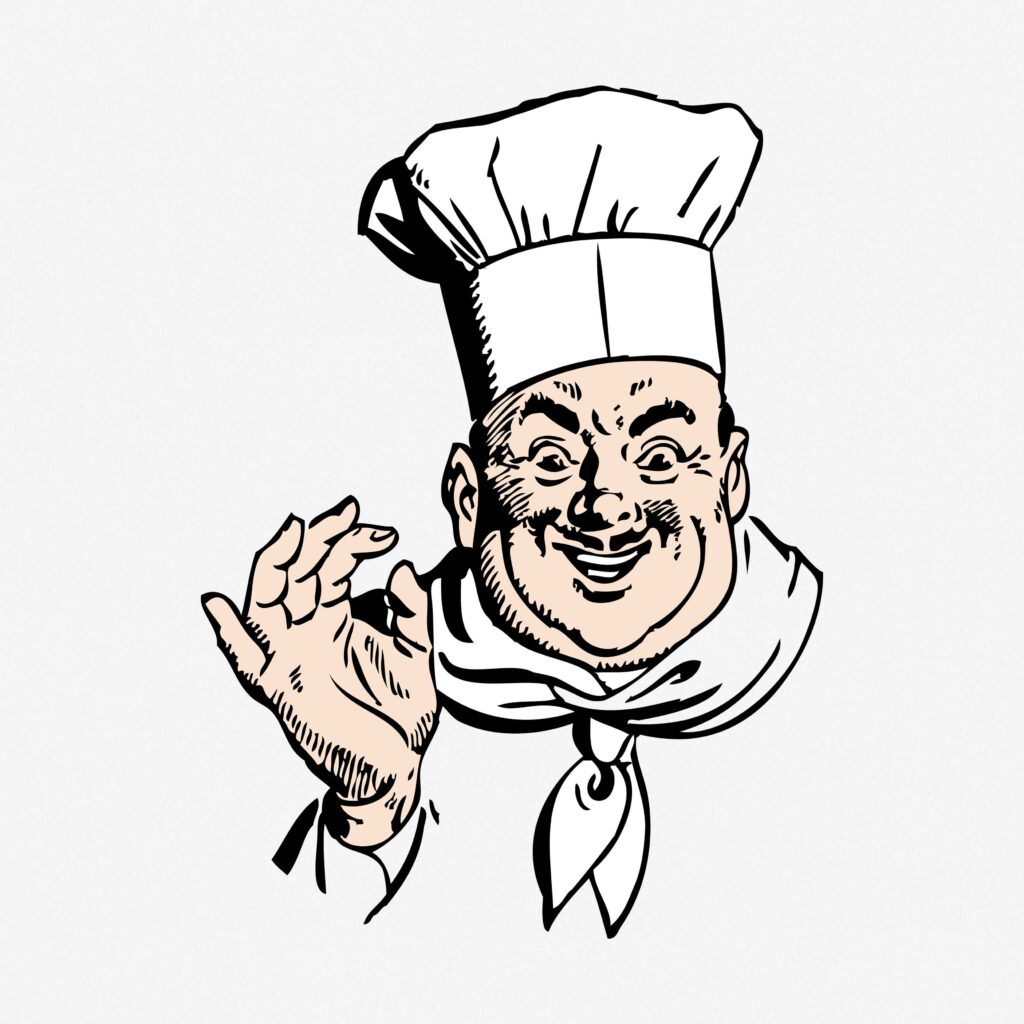
The number of pleats in a toque can also represent a chef’s level of experience or the number of recipes they know. Traditionally, a chef might wear a toque with 100 pleats, symbolising their mastery of various cooking techniques and dishes. Thus, the toque serves as a badge of honour and a sign of expertise in the culinary field.
Wearing a toque is also a way for chefs to establish a professional appearance. In busy kitchens, where many people are working together, the toque helps identify the chef and their rank. In many restaurants, chefs are often called by their titles, such as “chef de cuisine” or “sous chef,” and the toque helps distinguish these roles. This clarity can enhance teamwork and communication in the kitchen.
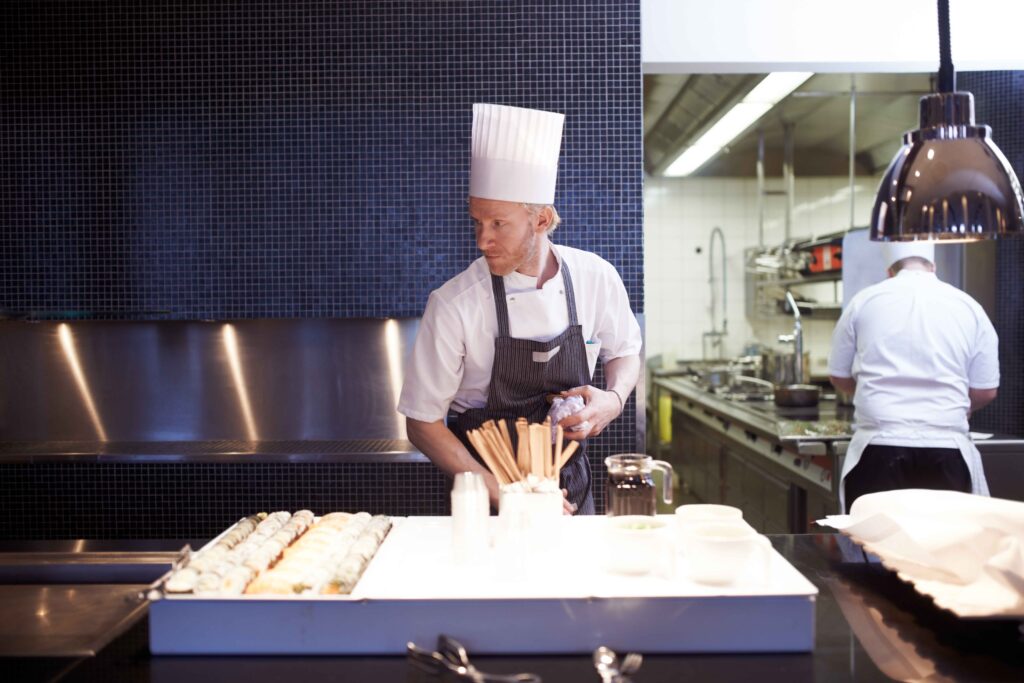
In addition to its practical uses, the toque has become a symbol of culinary art and tradition. It represents the dedication and skill that chefs put into their craft. For many chefs, wearing a toque is a source of pride, as it connects them to a long history of culinary excellence.
Today, while some chefs may choose to wear different styles of hats or none at all, the toque remains a lasting symbol in the world of cooking. It evokes a sense of professionalism and commitment to high standards in food preparation.
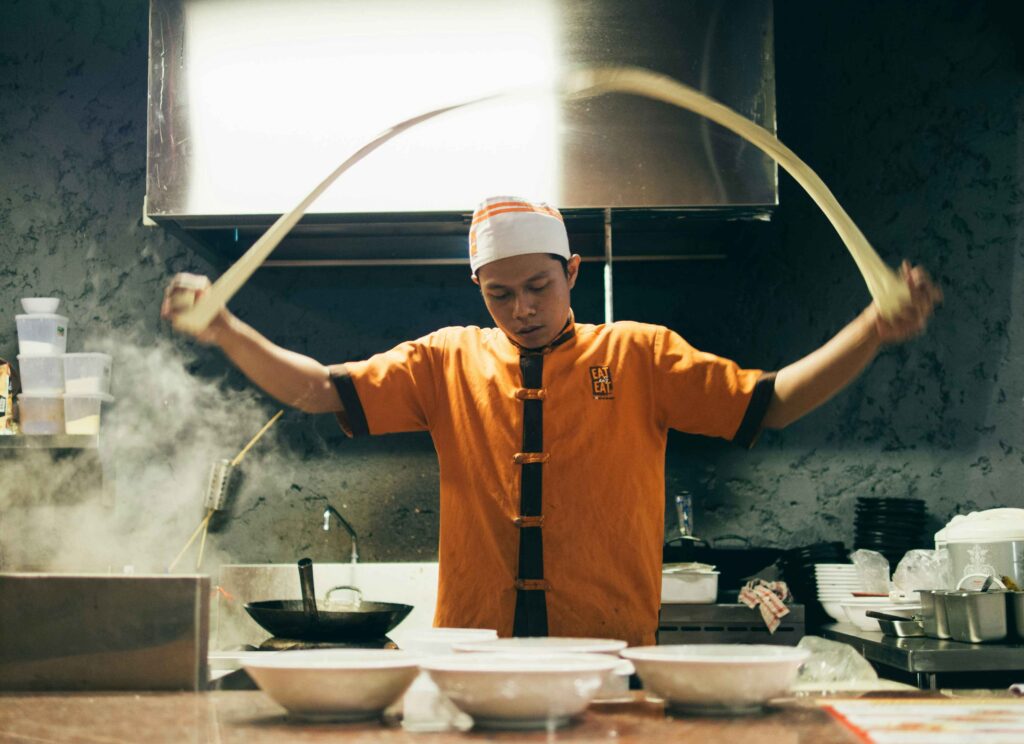
The toque represents a significant part of a chef’s identity. Its history, practicality, and symbolism make it an essential element of the culinary profession, reflecting the artistry and dedication of those who wear it.
Seniority in the kitchen:
QUESTION:

VOCABULARY:
